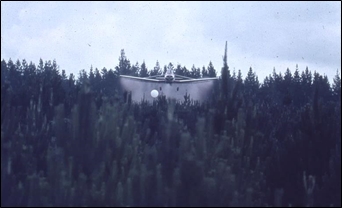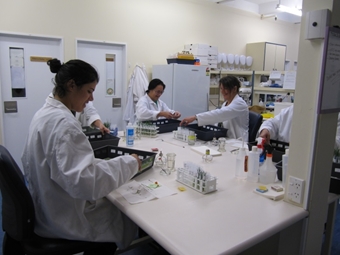PESTS AND DISEASES OF FORESTRY IN NEW ZEALAND
Controlling needle diseases of pines
Scion is the leading provider of forest-related knowledge in New Zealand
Formerly known as the Forest Research Institute, Scion has been a leader in research relating to forest health for over 50 years. The Rotorua-based Crown Research Institute continues to provide science that will protect all forests from damage caused by insect pests, pathogens and weeds. The information presented below arises from these research activities.
From Forest Health News 257, June 2015.

Dothistroma needle blight is successfully controlled by copper spray applied in late spring and again, if needed, in late summer. Over the years the amount of copper and the volume of spray applied per hectare have decreased significantly due to advances in spray technology and sound research. In the early 1980s, 2.08 kg copper metal equivalent in 50 litres of water was applied per hectare. Now, the amount of copper applied is 0.86 kg metal equivalent in 5 litres of an oil and water mix per hectare. Research funded by the Dothistroma Control Committee has shown that the same amount of copper applied in 3 litres per ha is as effective as the current treatment to control dothistroma. Some forest companies used 3 litres per hectare last season and reported improved operational logistics, and cost savings due to reduced ferry time by being able to treat a larger area per load. The committee will test the effect of reducing the amount of copper down to 0.6 kg per hectare (at 3 and 5 litres per ha) in October.

An operational chemical control method for red needle cast has not yet been developed, but work in this area is progressing well. Recently completed trials using potted cuttings showed that copper has potential to control red needle cast in the field. Laboratory tests were carried out where needles were inoculated with Phytophthora pluvialis, the cause of red needle cast, at two intervals after copper treatment (7 and 84 days). Smaller lesions developed on needles sprayed with copper applied once or twice compared with the unsprayed control. While copper is cheap to apply and the industry is very well set up to use it there are potential drawbacks that have to be overcome before it can be adopted. Firstly, Phytophthora pluvialis releases spores over a long period and it is likely that the effects of the copper will have to last for at least 6 months. Secondly, laboratory tests using small plants do not replicate field conditions. The fact that smaller les ions developed on needles treated with copper in the laboratory doesn’t necessarily prove that disease control in the field through inoculum reduction and/or disease suppression will be achieved. A field experiment testing the effect of copper applied operationally needs to yield positive results before copper could be confidently recommended as a suitable product to control red needle cast.
Lindsay Bulman and Stefan Gous
This information is intended for general interest only. It is not intended to be a substitute for specific specialist advice on any matter and should not be relied on for that purpose. Scion will not be liable for any direct, indirect, incidental, special, consequential or exemplary damages, loss of profits, or any other intangible losses that result from using the information provided on this site.
(Scion is the trading name of the New Zealand Forest Research Institute Limited.)

 Farm Forestry New Zealand
Farm Forestry New Zealand

